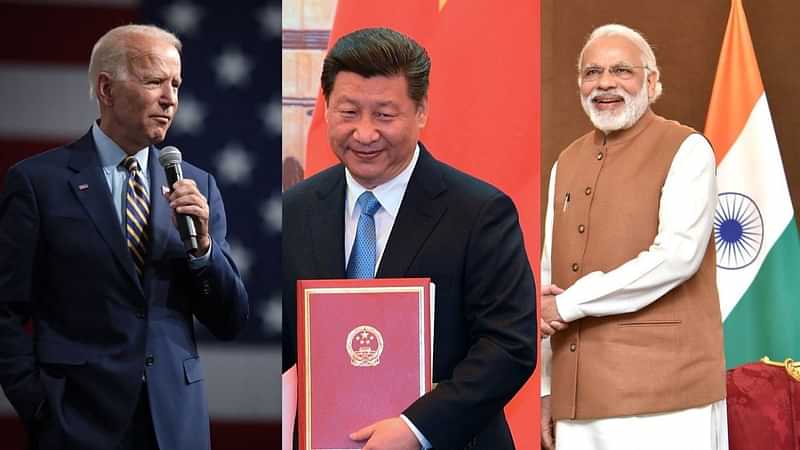LT GENERAL PRAKASH MENON

The lengthening shadow of coalition politics over the global strategic landscape is reflecting in several individual cooperative endeavours of rival groups led by the United States and China. NATO, a military alliance comprising 30 countries, unveiled its new Strategic Concept on 29 June. For the first time, China appears to be in NATO’s gunsight—it notes that Beijing’s stated ambitions and coercive policies ‘challenge their interests, security and values’. NATO also flagged the deepening strategic partnership between China and Russia, and their mutually reinforcing attempts to undercut the rule-based international order, including freedom of navigation on the high seas.
NATO’s strategic concerns about China are anchored in the Indo-Pacific, which is treated as a geo-strategic concept. With the expansion of China’s maritime capability and the US’ ability to lead an expansive Western military bloc, there is an increasing possibility of confrontations of various kinds and the NATO countries are collectively bound to defend any of their members. This seeming inevitability should be a major concern for India.
The ongoing Ukraine War is a carry-over symptom of an old European political confrontation. There is now an increased possibility of trouble in the Euro-Atlantic and Asia getting interconnected and manifesting themselves as a serious security concern. Increasingly so in the Indo-Pacific. These concerns are mostly based on perceptions filled with anxiety, uncertainty and the urge to protect one’s interests. Strategic logic derives its strength from such an outlook and shapes political postures.
India’s support for multipolar structure
The strategic logic that must shape India’s political posture in the larger global dispute between the US-led West and China must aim to foster peace in the Indo-Pacific. Strategic partnerships of varying kinds, based on common interests, have therefore been adopted as the cooperative structure. The context and interests determine the contours of cooperative endeavours.
India, therefore, inhabits both sides of the global political divide, which is evidenced by India’s proximity to the West versus its presence in the China-dominated Shanghai Cooperation Organisation (SCO), BRICS and RIC. Structurally, India’s strategic balance is now weighted towards the West and its economic balance is weighted towards China. The incongruence reflects India’s belief that international politics must be based on multipolar world order.
Both the unipolar and bipolar structures are inimical to India’s interests as they threaten its ability to make independent decisions. Both structures are recipes for the domination of the weak by the strong. They deepen the anarchic character of the world order. They have the potential to ignite wars that cannot evade the shadow of nuclear weapons. However, the highest international body responsible for keeping global peace, the United Nations Security Council, is divided into bipolar blocs armed with veto powers. It is, therefore, rendered impotent to deal with important security problems that involve disputes among themselves.
Case for non-alignment
It is obvious that the world is slipping into a state of deepened confrontation with weakened safety systems. India’s dealing with this trajectory of events must be based on cooperative efforts aimed at overcoming the tendency to make the unipolar and bipolar structures more rigid. An earlier attempt, in the Cold War context, resulted in the Non-Alignment Movement. The strategic question posed to India by contemporary global politics is whether non-alignment as a political posture needs to be resurrected.
In a recent article in Foreign Affairs, Shivshankar Menon, India’s former National Security Adviser, explains the case for non-alignment in the contemporary international system that is failing or absent, and when it seems to be each country for itself. He draws a parallel with the divided world at the start of the Cold War, which was characterised by local balances of power shifting rapidly in Asia. The turn to non-alignment, which he describes as somewhat natural, could gather more adherents. The opportunity for India to energise its non-alignment platform may have emerged.
India’s ongoing territorial dispute in the Himalayas would, however, complicate any move towards embracing non-alignment. China views the dispute as a bilateral issue that doesn’t interfere with other cooperative ventures on the global stage. After Beijing’s military intrusions in Ladakh in 2020, India disagreed with China’s approach and maintained that it cannot be business as usual. However, economic relations remain intact and are growing within the existing political framework.
China’s hegemony
The Ukraine War that has followed the stigma of China being castigated as the origin of the Covid-19 pandemic has resulted in coalescing of countries under the US leadership. These countries are attempting to defend their interests against the Russia-China combine. China would prefer an India that is non-aligned if it helps in its endeavour to become an Asian hegemon and subsequently, at least as the leader of one of the bipolar blocs. Russia’s preference would converge with China albeit for different reasons.
The benefits conferred on China by India turning non-aligned must alert us to the larger dangers that lurk in a China-dominated regional order. Nor must it ignore the promise that India can lead a large group of countries that are left to themselves and are wary of being trampled upon by the weight of the global bipolar strategic confrontation. It is probably time that India reviews non-alignment as a political posture while assessing the support it can possibly garner. If sufficient support materialises it may be a path worth pursuing.
No comments:
Post a Comment